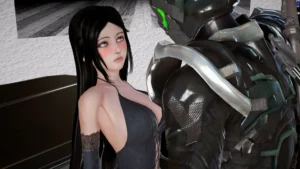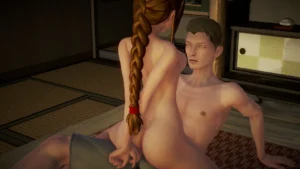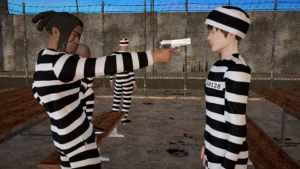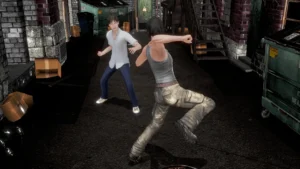
Once in a Lifetime
Play Once in a Lifetime
Once in a Lifetime review
Explore the story, characters, and gameplay of Once in a Lifetime
Once in a Lifetime is a captivating visual novel game that blends an engaging story with well-developed characters and immersive gameplay. This article explores the game’s unique narrative, character dynamics, and interactive elements that make it stand out in the visual novel genre. Whether you’re curious about its plot twists or the choices that shape your experience, this guide offers a comprehensive look into what makes Once in a Lifetime a memorable adventure.
Unpacking the Story and Narrative of Once in a Lifetime
Let’s be real—most stories in games follow a pretty predictable path. You’re the hero, you beat the bad guy, you save the day. 🥱 But what if a game completely flipped that expectation on its head? What if you moved back to your sleepy hometown only to find it’s a hotbed for a mysterious cult, otherworldly threats, and… well, a surprising number of attractive and interesting people who want to get to know you? That, in a nutshell, is the brilliant and bizarre premise of Once in a Lifetime. The Once in a Lifetime story isn’t just a backdrop; it’s the main event, a wild ride that had me hooked from the first cryptic dream sequence.
I remember starting my first playthrough, expecting a fairly standard dating sim. Boy, was I wrong. Within the first hour, my character was already stumbling upon a secret ritual in the woods and being warned by a suspicious bartender about people disappearing. The game masterfully builds this atmosphere of unease, making you question every character’s motives. Is the friendly shopkeeper in on it? What does the mayor really know? This constant, low-level suspense is what makes the Once in a Lifetime story so incredibly engaging. You’re not just clicking through dialogue; you’re a detective piecing together a conspiracy that feels both ridiculous and terrifyingly plausible.
### What Makes the Story Engaging? 🤔
The magic of this interactive narrative game lies in its perfect blend of tones. One moment, you’re having a heart-to-heart with a character about their deep-seated fears, and the next, you’re involved in a laugh-out-loud slapstick comedy routine or a wildly inappropriate joke. This balance of thriller and humor in games is exceptionally hard to pull off, but Once in a Lifetime does it with style. It never takes itself too seriously, even when the fate of the world is at stake. This unpredictability kept me on my toes, never sure if the next scene would make me gasp or burst out laughing.
It’s the characters that truly anchor this chaos. You don’t just learn about them; you live with them. Hanging out with the stoic Judie, the energetic Caroline, or the mischievous twins feels authentic. Their personalities aren’t just quirks for the sake of it; they directly influence how the plot unfolds around you. Investing in these relationships doesn’t feel like a side quest—it feels integral to uncovering the truth. The game made me care, and because I cared, every revelation and every danger felt personal.
### Themes and Plot Twists 🌀
At its core, the Once in a Lifetime game plot is a classic mystery wrapped in layers of the supernatural and the absurd. The central theme of a cult storyline visual novel is explored with a surprising amount of depth. It delves into ideas of belief, control, and what people are willing to do for a promise of something greater, all while occasionally poking fun at the very tropes it uses.
And oh, the visual novel plot twists. Just when you think you’ve got a handle on things, the game pulls the rug out from under you. I won’t spoil anything major, but imagine thinking you’re dealing with a local group of eccentrics, only to discover their plans are far more ancient and cosmic than you ever imagined. One twist, in particular, involving a character’s true identity and allegiance, completely recontextualized everything I had experienced up to that point. These visual novel plot twists aren’t just for shock value; they are expertly placed to escalate the stakes and force you to re-evaluate every decision you’ve made.
The narrative isn’t afraid to get dark, but it always counterbalances the heaviness with a well-timed joke or a moment of genuine warmth. This emotional rollercoaster is a hallmark of the experience, making the world feel alive and unpredictable.
| Story Arc | Key Themes Explored | Impact on Gameplay |
|---|---|---|
| The Hometown Mystery | Trust, Deception, Community | Unlocks initial locations; determines which characters share early secrets with you. |
| The Cult’s True Goal | Power, Sacrifice, Belief | Opens up new story branches; can lock or unlock certain romance paths based on your choices. |
| The Supernatural Revelation | Destiny vs. Choice, The Unknown | Introduces new gameplay mechanics and locations; drastically alters the final act. |
| The Final Confrontation | Unity, Sacrifice, Consequences | Your relationship levels with all characters directly influence the resources and options available for the finale. |
### How Player Choices Influence the Narrative 🎮
This is where Once in a Lifetime truly shines as an interactive narrative game. The phrase player choices impact story is often thrown around, but here it’s a fundamental truth. This isn’t an illusion of choice; your decisions have tangible, often dramatic, consequences on the Once in a Lifetime story.
Pro Tip: Don’t be afraid to save often and explore different dialogue options! Some of the funniest and most revealing scenes are hidden behind choices that might seem “wrong” at first.
Early on, I made a flippant decision to mock the town’s “founder’s story” instead of showing respect. I didn’t think much of it until hours later, when that specific character refused to help me in a critical moment, citing my earlier disrespect. I had to find a much harder way to progress. That was my “aha!” moment—the game was really listening.
The way player choices impact story extends to every facet:
* Romance Paths: Obviously, who you choose to spend time with determines whose story you experience. But it’s deeper than that. Supporting a character during their personal crisis can unlock entirely new scenes and plot points related to the main mystery.
* Character Outcomes: Your actions can determine whether a character finds happiness, remains trapped by their past, or even meets a tragic end. There’s no “one size fits all” happy ending for everyone.
* The Ending Itself: The finale isn’t just a binary good or bad ending. There are numerous endings, from the triumphant and heartwarming to the absurdly hilarious and the downright apocalyptic. The ending I got on my first blind playthrough was… not great, to say the least, and it was entirely my fault! It made my second playthrough feel like a genuine redemption arc.
This level of agency creates a powerfully personalized experience. My story was different from yours because my choices were mine. It encourages replayability not as a chore, but as a genuine desire to see how the other half lives—and to try and get that perfect ending where everyone I care about makes it out okay.
The Once in a Lifetime game plot is more than a list of events; it’s a reactive world that bends and shifts around you. It understands that a great story isn’t just about what happens to the protagonist, but about how the protagonist’s actions ripple out and change the world around them. It’s a masterclass in how to make a player feel truly responsible for the narrative they are creating.
Once in a Lifetime offers a rich narrative experience with compelling characters and meaningful choices that shape your journey. Its unique blend of thriller, humor, and interactive storytelling creates an engaging atmosphere that keeps players invested. Whether you’re a fan of visual novels or new to the genre, this game provides a memorable adventure worth exploring. Dive in and experience the story that unfolds based on your decisions.





















